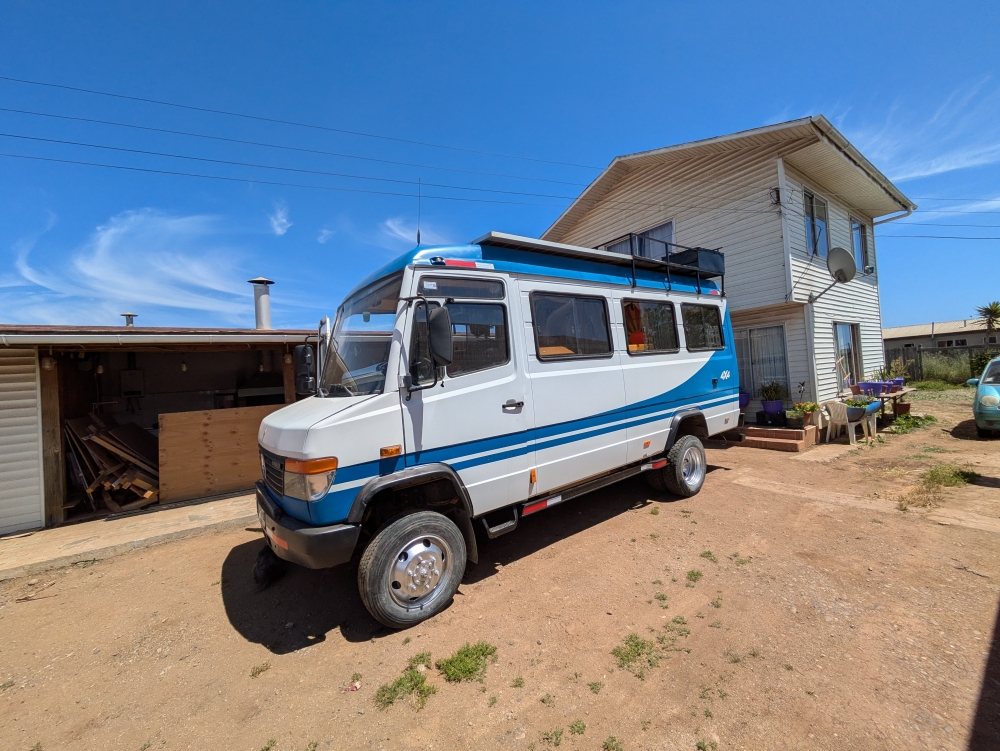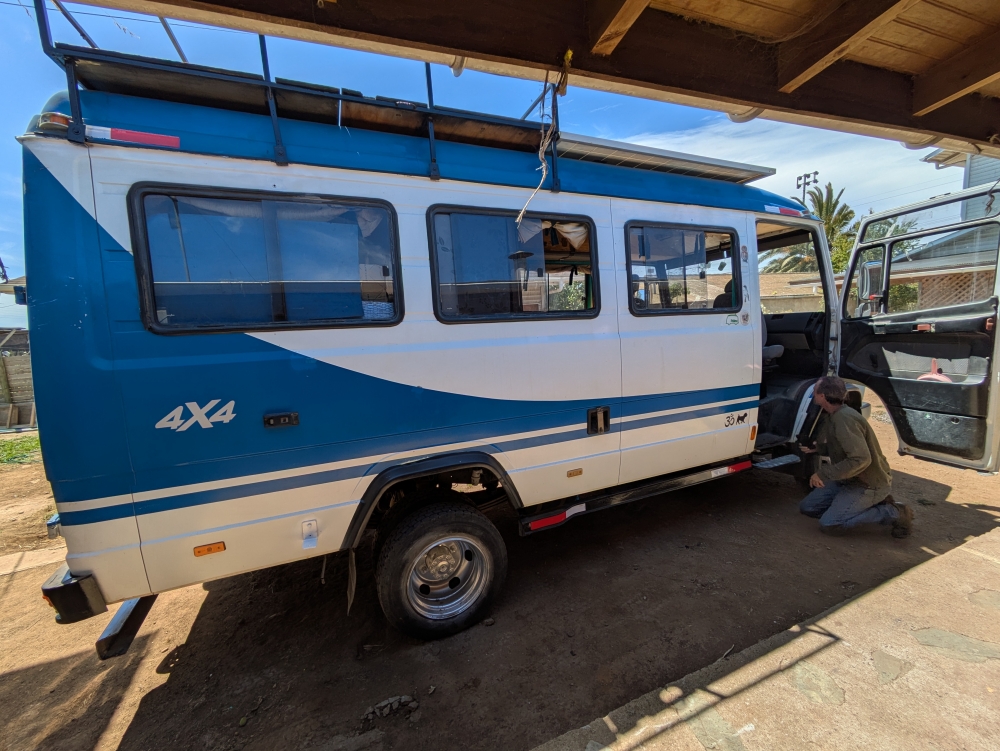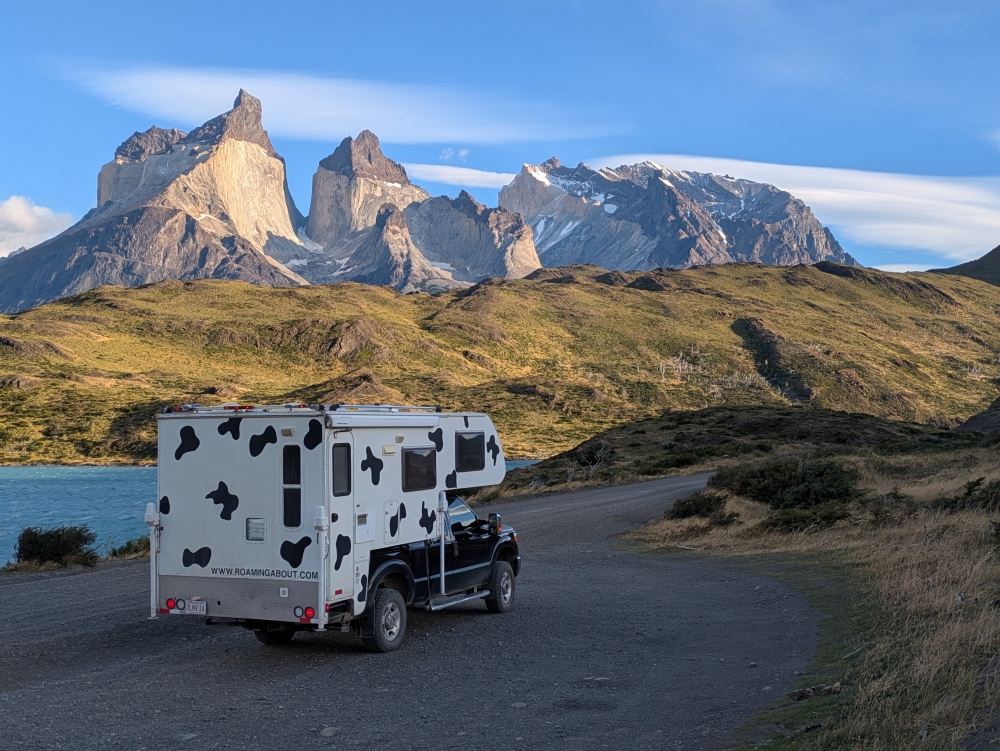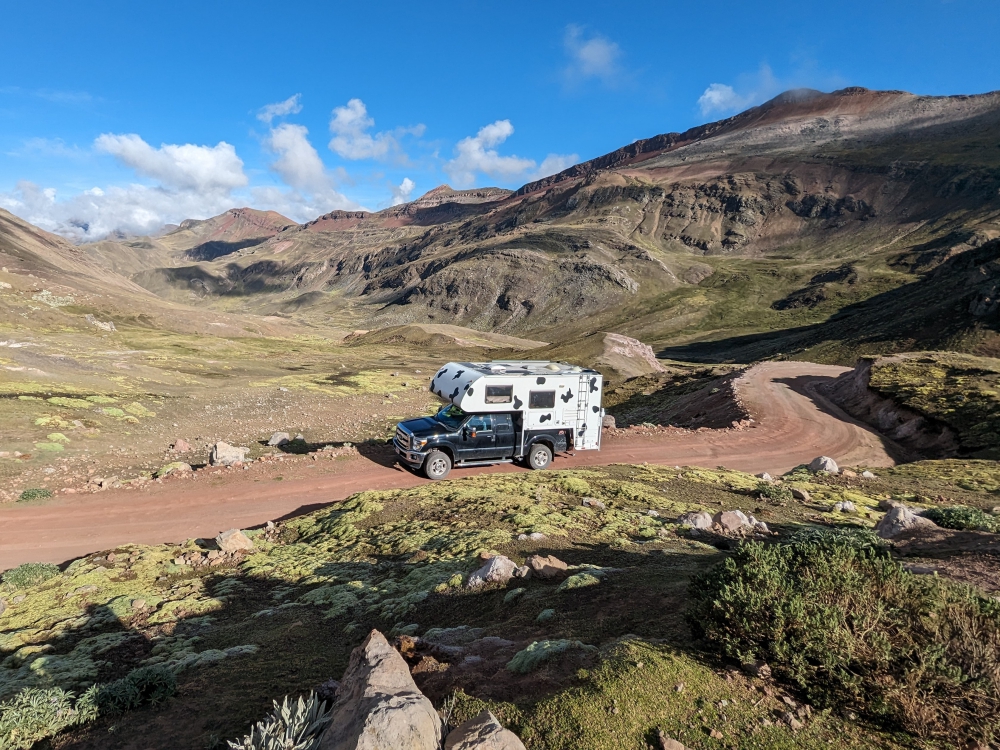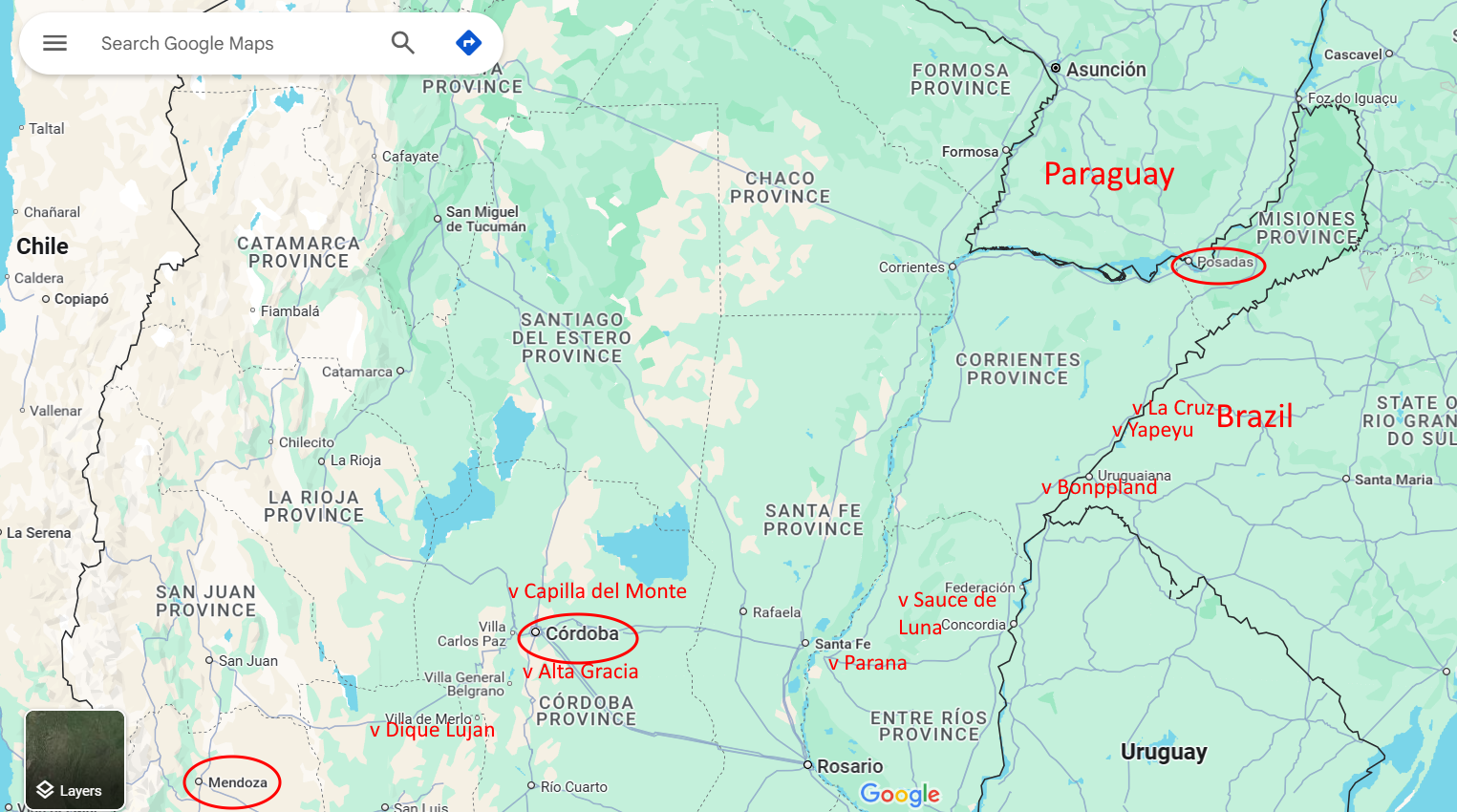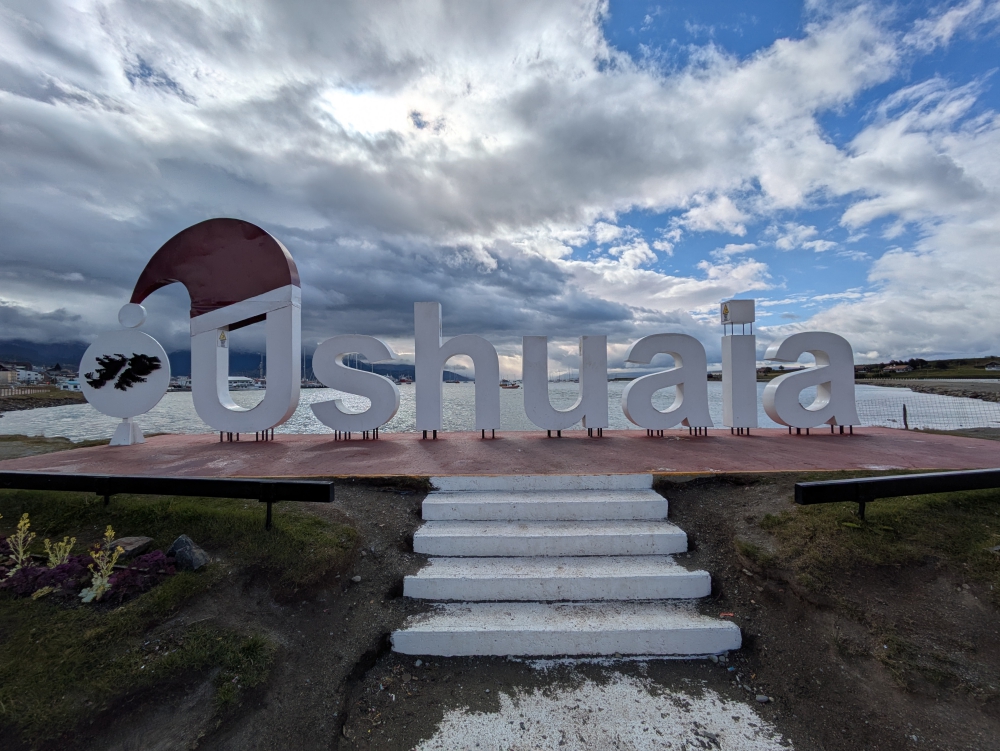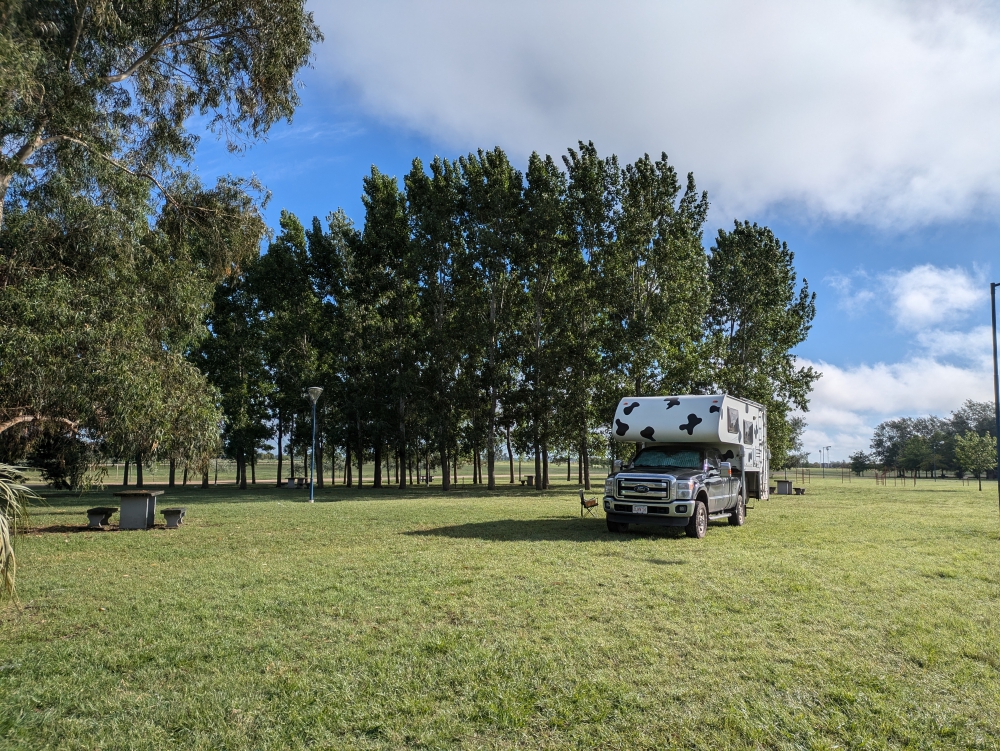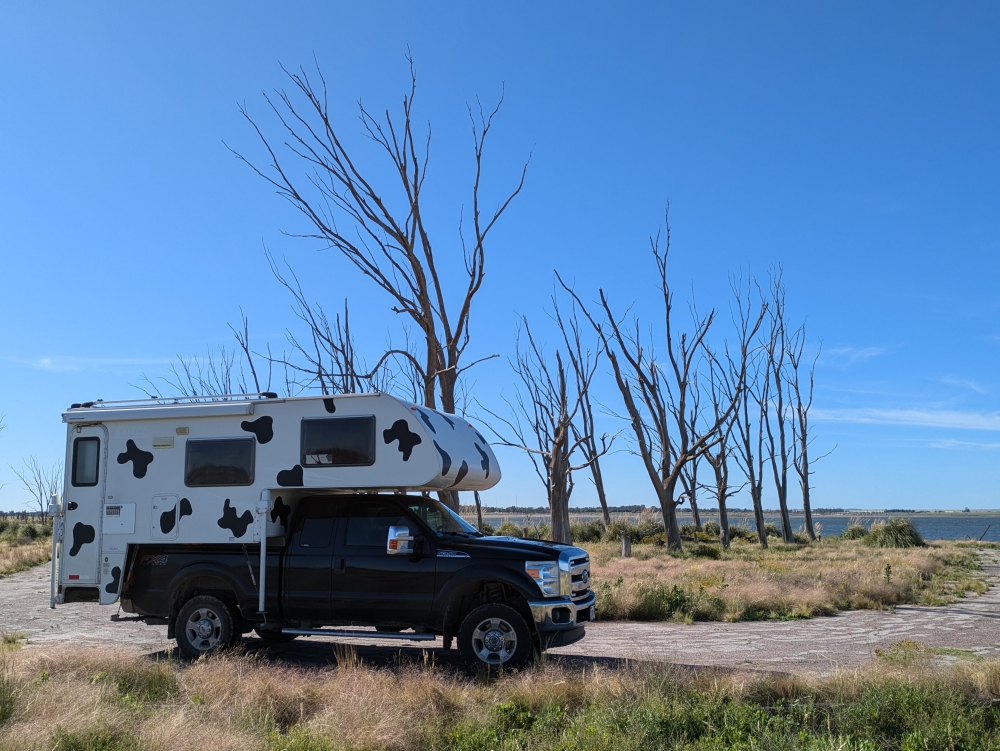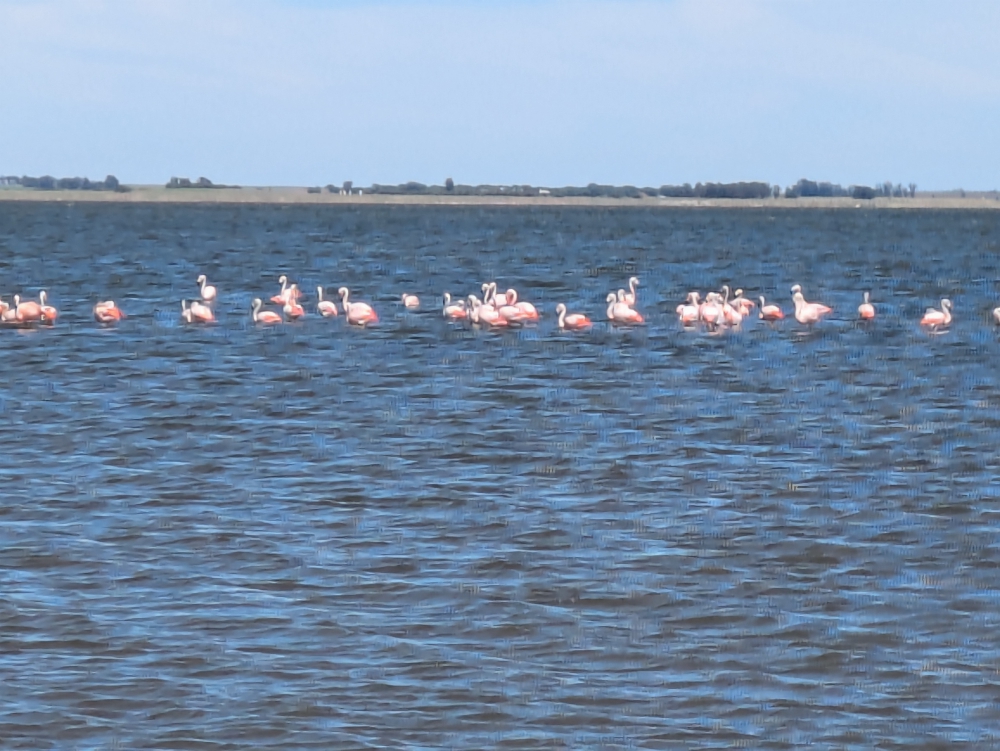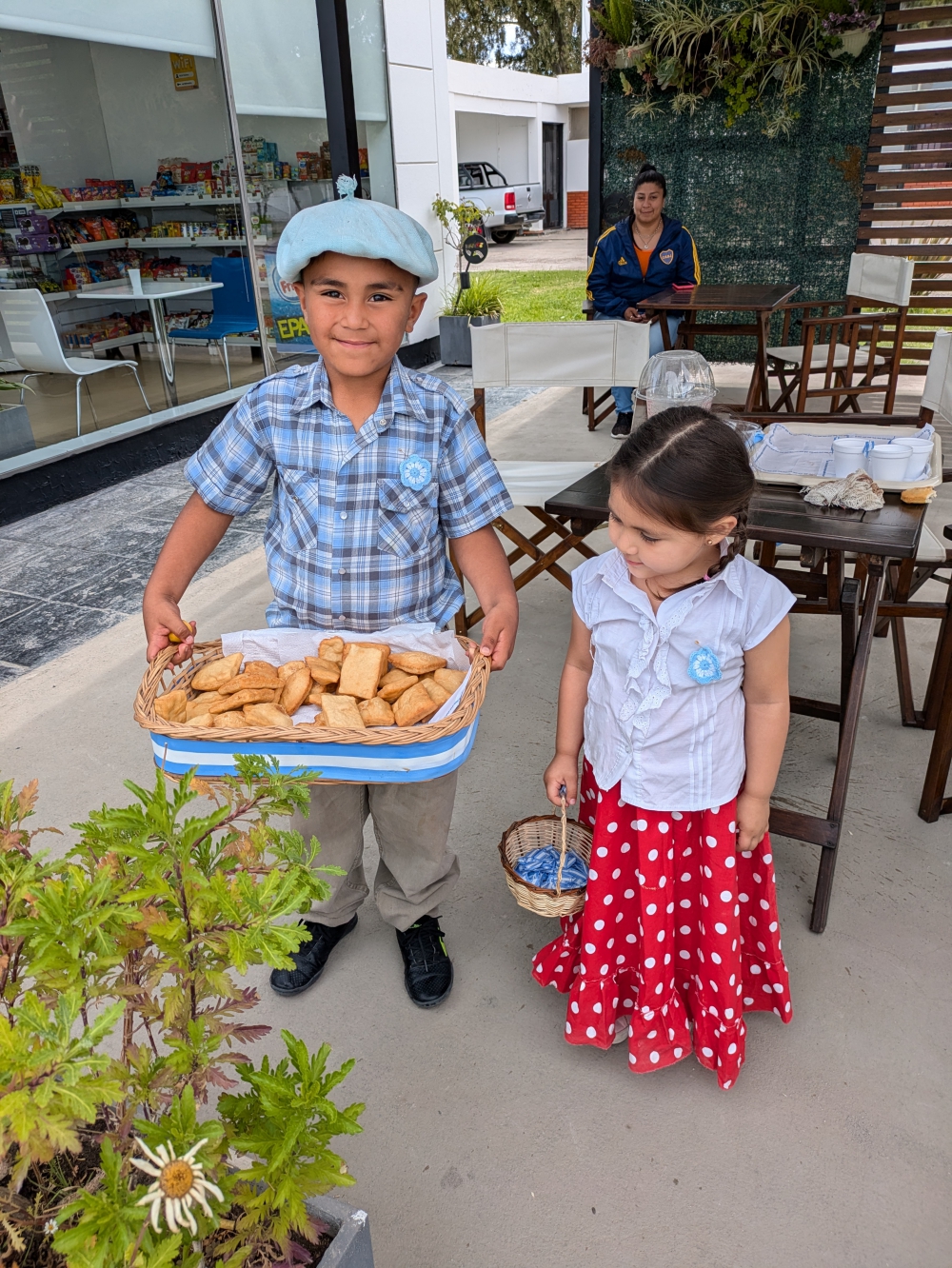
Every month, I post a report of our expenses to show that it is possible to live a comfortable, exciting, and adventurous life without breaking the bank. “The less money you spend, the less you need to make” is our motto. 🙂 At the beginning of each year, I produce an expense report for the previous 12 months. This is the most recent one, for 2024.
Our first yearly expense report (2016) can be found here, the report of 2017 is here, the one for 2018 here, our 2019 expenses are located here, our total costs for 2020 are documented here, those for 2021 are detailed here, 2022’s financial summary hides here, and you can find our full expense report for 2023 here.
These reports include ALL of our expenses, in US$, for two adults and a 60-pound dog. We adopted Maya on June 4th, 2019. Under groceries we incorporate food, produce, and non-alcoholic drinks predominantly bought in supermarkets. Toiletries belong in that category as well. Dining out means eating at a restaurant/event or purchasing take-out food. The health category covers non-prescription medicines and vitamins/supplements; medical contains prescription drugs and doctor’s visits. Because of our income level, Mark and I are eligible for free health care within the state of Massachusetts. For check-ups, we both return to the US East Coast. The internet cost is for our Starlink’s monthly subscription fees. We bought our satellite dish in Lima, Peru, in September 2023.
In 2024, Mark, Maya, and I drove from Bolivia to South America’s tip, passing through Uruguay, Chile, and Argentina in our truck camper Thirsty Bella. We also took a three-month break from the road in Massachusetts, USA and Belgium.

A break from the road for Maya

Happy hour with friends in Belgium

Enjoying the Belgian delicacies

On vacation with my cousin and her husband in Germany

Mussels and fries in Belgium

The use of a decent-sized oven in Belgium!

Going shopping by bicycle
On this multiple-year South American overland journey, which started in November 2022, so far we visited Colombia for six months, Ecuador for three, Peru for five, and Bolivia for a month and a half. We continued with a couple of months in Chile, a month in Uruguay, and about eight months in Argentina. That’s a lot of driving.

The incredible Los Caracoles road

Driving in Northern Argentina

Welcome to Argentina

Welcome to Uruguay

Crisscrossing Uruguay

Awful fuel mileage in the mountains

Chilly drive in the countryside
So, it is no surprise that the biggest expense category for last year was, once again, our vehicle ($6,248!), with $3,587 going to fuel.

Filling our fuel tank with jerrycans

The most affordable fuel station in Argentina

Fuel prices in Argentina

Buying fuel in Argentina

In Chile, the fuel is 1/3 more expensive than in Argentina

Buying more fuel in Argentina

Getting very expensive fuel in Uruguay

Another fuel top-up in pricey Uruguay
Maintaining the F350 truck cost over $2,000, since we had a $600 spark plug issue in Buenos Aires, we bought four brand-new tires in Chile, and we keep on buying new ignition coils, generic ones in Bolivia and better ones in the US.

Replacing worn-out ignition coils in Bolivia

Two new tires in Northern Chile

Our spare tire had a leaking valve

Doing our own oil change at a shop in Chile

Buying extra oil for a future oil change in Argentina

Getting our tires balanced and rotated in Chile

More new tires in Santiago, Chile

Needing professional help for a seized spark plug issue

Hiring someone to separate a seized brake caliper pin
Furthermore, liability insurance for the MERCOSUR countries, obtained in Argentina, tripled within four months ($412) and we paid $123 in parking fees and $68 for tolls. Yup, Thirsty drank a lot of money in 2024!

Toll booth in Bolivia

Toll booth in Northern Argentina

Another toll booth in Argentina

Toll booth in Uruguay

Expensive tolls in Uruguay
More than $3,000 went to groceries, which was a couple of hundred dollars more than last year. I guess we can blame the insane inflation in Argentina for that. Although, because of it, we only buy necessities. We hope that wherever we spend the bulk of our time this year, life will be cheaper.

One hundred dollars worth of Argentinean pesos

Counting Argentinian pesos

Vegetable market

A decent grocery chain in Argentina

Another decent grocery store in Argentina

Typical bakery in Argentina

Massive “Jumbo” grocery store in Chile

Vegetable stand in Santiago de Chile

We really like this Chilean grocery store
The travel category was a big one ($2,357), because the three of us flew to both our home countries, an extremely rare occasion. We enjoyed this break from the road, since we’ve been roaming about fulltime for 21 years now. This amount bought us return flights from Buenos Aires, Argentina, to Boston, MA, and from Boston to Brussels, Belgium, plus one checked bag for the last leg.

International flights

A real, comfy bed for Maya

Gathering with friends in Massachusetts
Maya had her most expensive year as well at over $1,200. Not because she got sick, however. All those international health certificates and export permits added up, especially when two of them had to be obtained in the US. Our little family flying “home” is not only logistically challenging…

Vet visit after Maya got bitten and needed stitches

Maya’s vaccination sheet

Vet visit before entering Uruguay

Agriculture department at the airport of BA to get Maya’s paperwork

Stuffing Maya’s pathetic dog bed

More paperwork needed for Maya’s border crossings
In 2024, Mark and I also purchased high-quality dogfood for $300 and pet supplies for $134, and gave vet clinics $130.

Waiting for Maya’s online dogfood offer to kick in

Pricey dogfood for Maya

More dogfood for Maya in Chile
Our alcohol expenses remained similar to 2023 at around $600. We mostly bought decent, local wines at $4 a bottle.

Chilean wine

Stocking up on affordable and amazing wine from a small vineyard

Affordable and tasty Dada wine in Argentina – our trusted brand

How about some chocolate wine?

Celebrating New Year’s Eve with a homecooked meal and a reserve wine
Money spent on gifts ($554) went up a bunch, because there was a wedding present involved, on top of the usual birthday and Christmas gifts. And, Mark and I offered my parents thank-you tickets for a musical as well, because they were super generous over the summer.

Belgian beer as a gift for Mark’s birthday

Dinner out with Jo and Tom as their wedding gift

Day trip to spot wildlife for my birthday

The cute and breeding Rockhopper penguin
Computer costs ($548) include keyboards and hard drives, a new tablet for the car, another router for Bella, hosting fees, and software. Leave it to Mark to find the best deals for all of this.

Dinner out with our friends, Heather and Jon

Yummy pizza out in Bolivia

Amazing and affordable empanadas in Northern Argentina

Parilla (BBQ) in Cafayate, Argentina

Pizza out

High tea in Gaiman, Argentina
We spent only 1/3 of last year’s amount on dining out ($478). You can definitely blame the insane increase of prices in Argentina for that. Plus, we received donations for this splurge as well, some of which I am saving for 2025. I have to admit that because of our frugal attitude towards restaurants, our quality of life feels like it has gone down. Way more cooking and dishes and fatigue!

Argentinian pizza with fries and eggs

Take-out pizza

Take-out sushi for Mark’s delayed birthday dinner in Buenos Aires

Our last pizza out in 2024

Expensive empanadas in Argentina six months later
Utilities, camper repairs, clothing, and household supplies were on par with 2023.

A new spoon/ladle was needed.

New faucet for our bathroom

Every year, we need a new non-stick pan.

Shopping in a hardware store

Fixing the water heater
Internet, propane gas, and water are necessities in life. For our interior, we could use a new DC-DC charger and a bathroom faucet, as well as household batteries, poop bags, sheets, and wine glasses. We also bought a jerry can to carry extra fuel.

Gravity filling our propane tank, something we are familiar with from the boat life

Filling our tank with potable water

Time to get more propane gas

Bringing the empty propane tank to a filling station

Friendly service in Argentina

Filling with water from jugs, via our pump

Getting fresh water the old-fashioned way

Our propane tank was accidentally filled with butane, which caused issues in the freezing weather!

Topping up with propane

Getting free water at the fire station of Ushuaia, Argentina

Filling with potable water, a bi-weekly chore
The entertainment category wasn’t high, at $234, since we’ve been avoiding the steep national park entrance fees in Argentina and Chile and focused on free activities, like hiking, and more affordable visits. The most expensive excursion we booked in 2024 was an amazing day trip on the Salar (salt flats) of Uyuni, Bolivia.

Day trip to the Salar in Bolivia

Visiting another salt flat in Northern Argentina

Visit to a fort in Uruguay

Historic site of Villa Epecuen, Argentina

The oldest Welsh house in Gaiman, Argentina, built in 1874
As far as yearly clothing for two people, we didn’t go overboard. New hiking shoes, shorts, and jeans for Mark and two pairs of pants for me cost $134 in total. The only reason the “Health & Fitness” category went up was our increased awareness and actions towards improved dental hygiene. We bought a water flosser, an electric toothbrush, and better toothpaste.

Carrying extra, smelly fuel with us

New jeans for Mark!
Transportation covers the use of Uber, cable cars, and taxis when we were camped on the outskirts of cities and our annual bank charge was a bit higher than before, because of a mistake with a (usually free) ATM fee.

Cable car ride throughout La Paz, Bolivia

A colectivo or minibus in La Paz, Bolivia

Cable car ride in Santiago, Chile
I’m not sure if $100 a year for laundry is expensive, but, since drop-off prices in Chile, Argentina, and Uruguay are super high, we have been washing more and more clothes by hand, saving a lot of money. Self-serve machines in South America are very rare.

Hand laundry in Uspallata

Checking out laundromats in Central Argentina

Laundry by hand at the beach

Ice cold, but free water to do a bunch of laundry

This is the most clothes I’ve ever washed by hand, I think.

Cheap laundry in Rio Gallegos, Argentina
Mark and I only paid for camping once in 2024, which is hard to believe. Ten nights of fees went to Zapparancho ($83) near Buenos Aires, Argentina, because we needed a base to get ready for life on the road again after our summer break. And, we needed to fix a few things in a convenient location. This was also a good place to donate a lot of clothes and gear we didn’t use anymore.

Fixing the engine at Zapparancho

One of our favorite campsites this past year, in Bolivia

Camped by “The hand in the desert,” Chile

Wild camping in Northern Argentina

Great boondocking spot along the coast in Argentina

Beautiful camping spot on Tierra del Fuego, Chile

Pretty camping spot in Ushuaia
Mark and I had bloodwork done in Bolivia, which makes up the $74 for medical costs. The miscellaneous category includes things like a voluntary contribution for being towed out of the sand in Northern Chile and an assortment of copies.
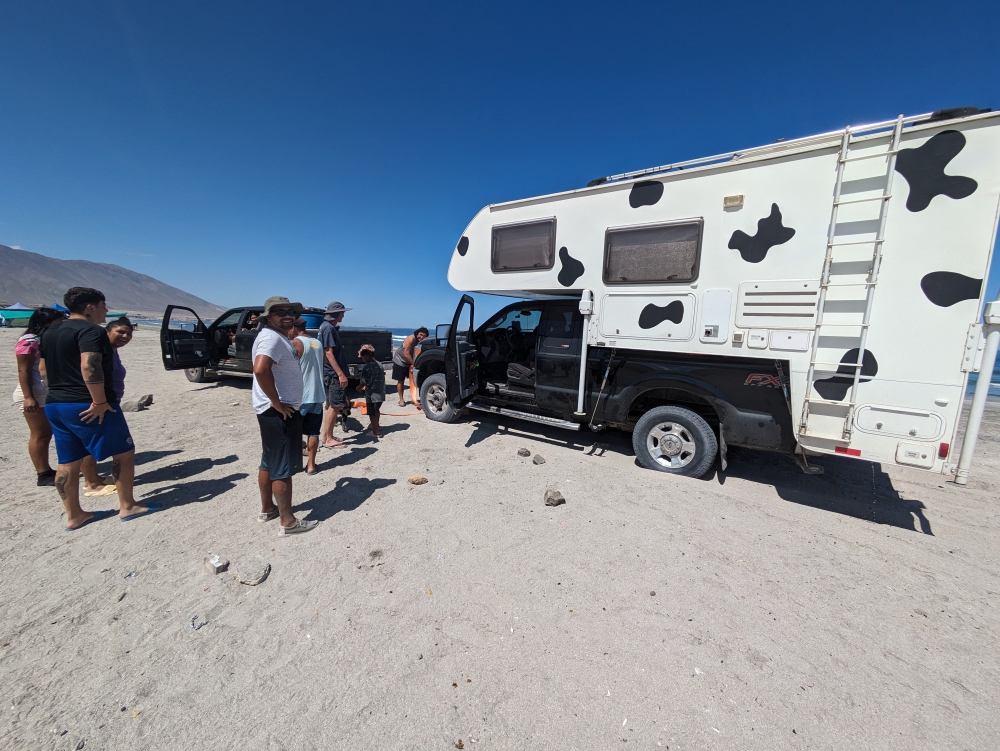
Getting towed out of the sand after a frightful twelve hours in Northern Chile
Another amount that has decreased a lot in 2024 is “drinking out.” Again, with current prices in bars and restaurants soaring, we are just as happy to have a drink at home. Especially since, surprise, decent bottles of wine in Argentina have remained very affordable.

Wine tasting in Central Argentina

Wine tasting at our favorite vineyard

Wine tasting with friends in Argentina
I want to mention two more things in this expense report. First, thank you to everyone who has contributed a donation. We really appreciate this. Not only does it lower our annual costs, but it makes us smile and realize that you appreciate these blog posts and following along with our adventures.
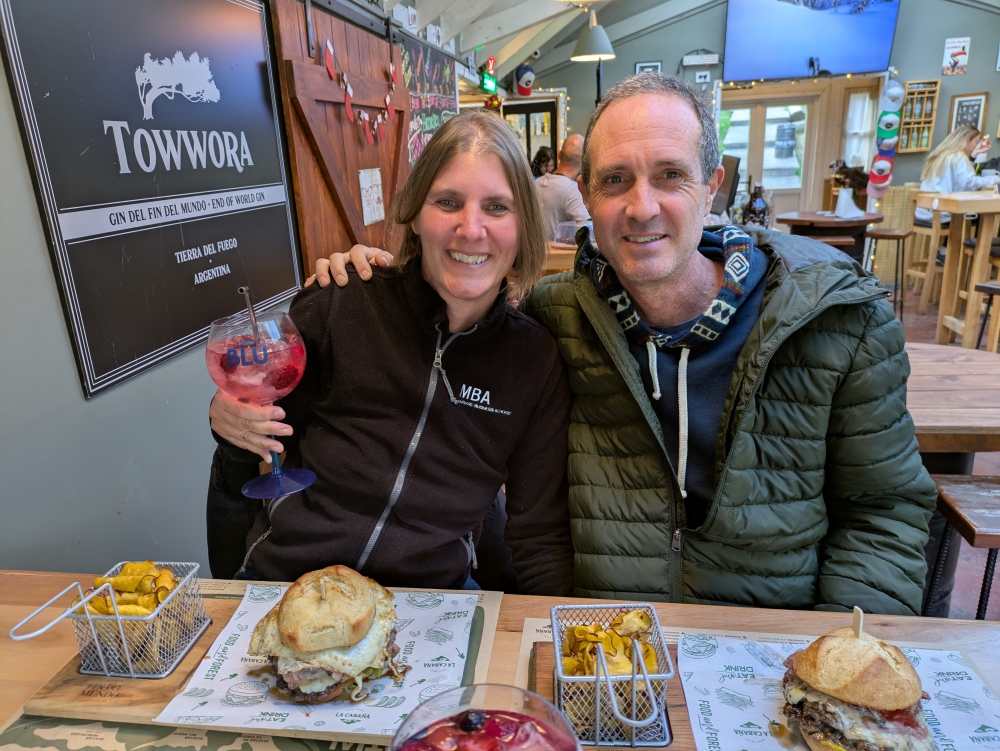
Our only dinner out (with a friend) during our five weeks in Ushuaia
And, to be completely transparent, there was a once-in-a-lifetime experience and cost for me, Liesbet, at the end of 2024. I paid for a ten-day trip to Antarctica in January, which I will report on soon. It was super expensive, but as cheap as possible. I spent $5,752 on the “cruise” ticket with money I had saved up in Belgium, which is why it’s not reflected in our annual budget. This includes a $15 bank fee and $37 for mandatory insurance.

Visiting with the chinstrap penguins in Antarctica

One of my favorite photos of the Antarctica trip

In Antarctica with penguins and our ship, Ushuaia, in the background
In conclusion, our 2024 total of $16,661 is a little bit higher than our $16K average of the last two decades. This boils down to just under $1,400 a month. Let’s see what 2025 brings!
